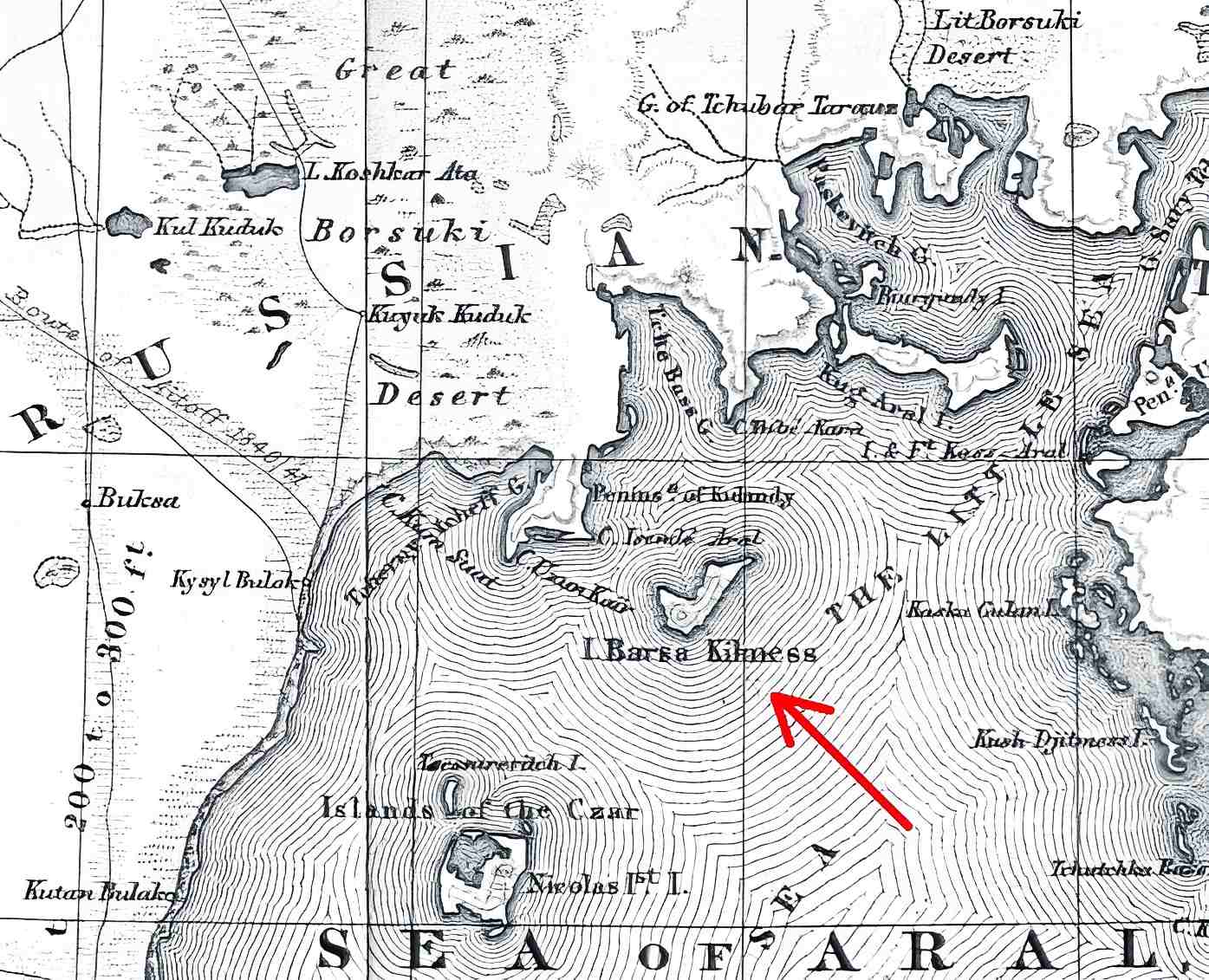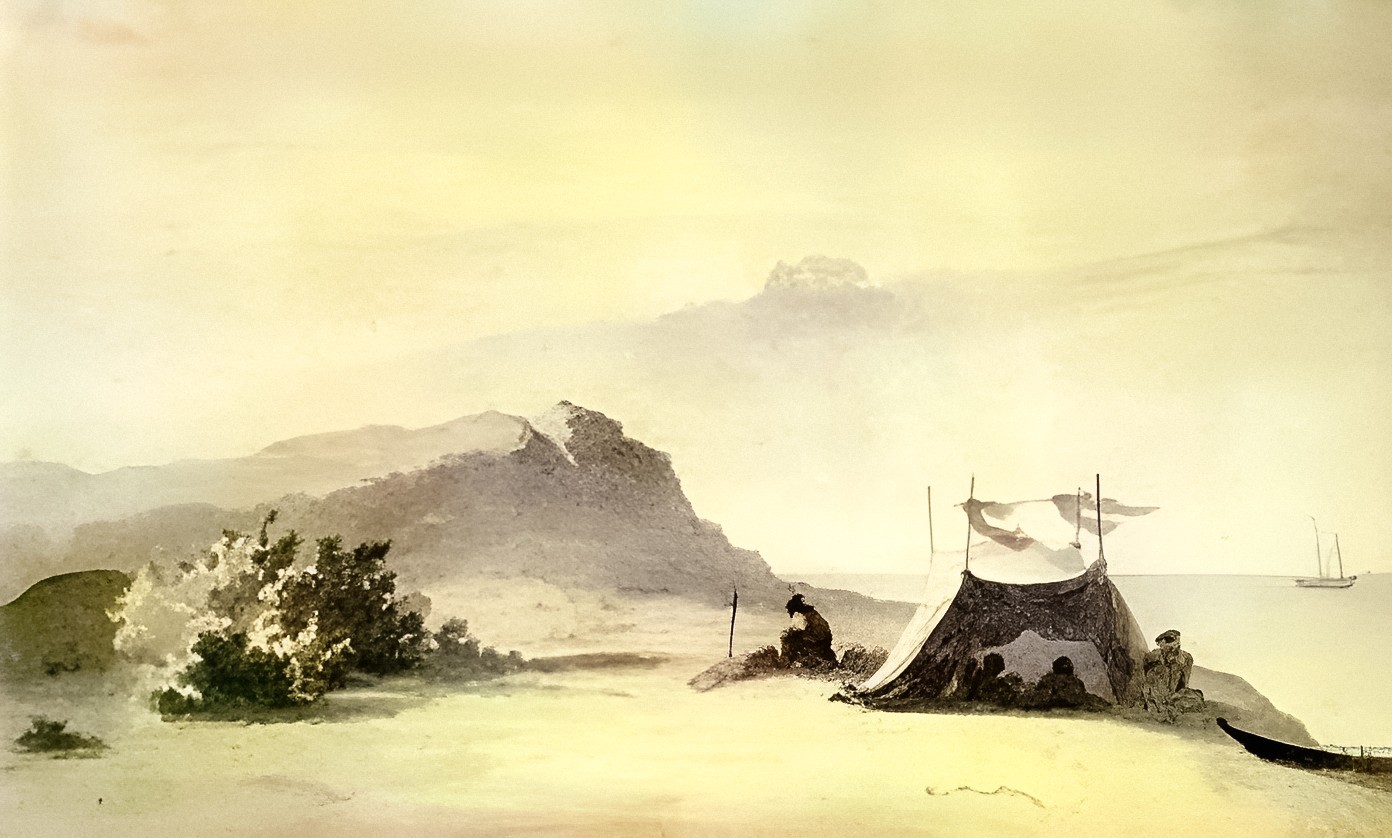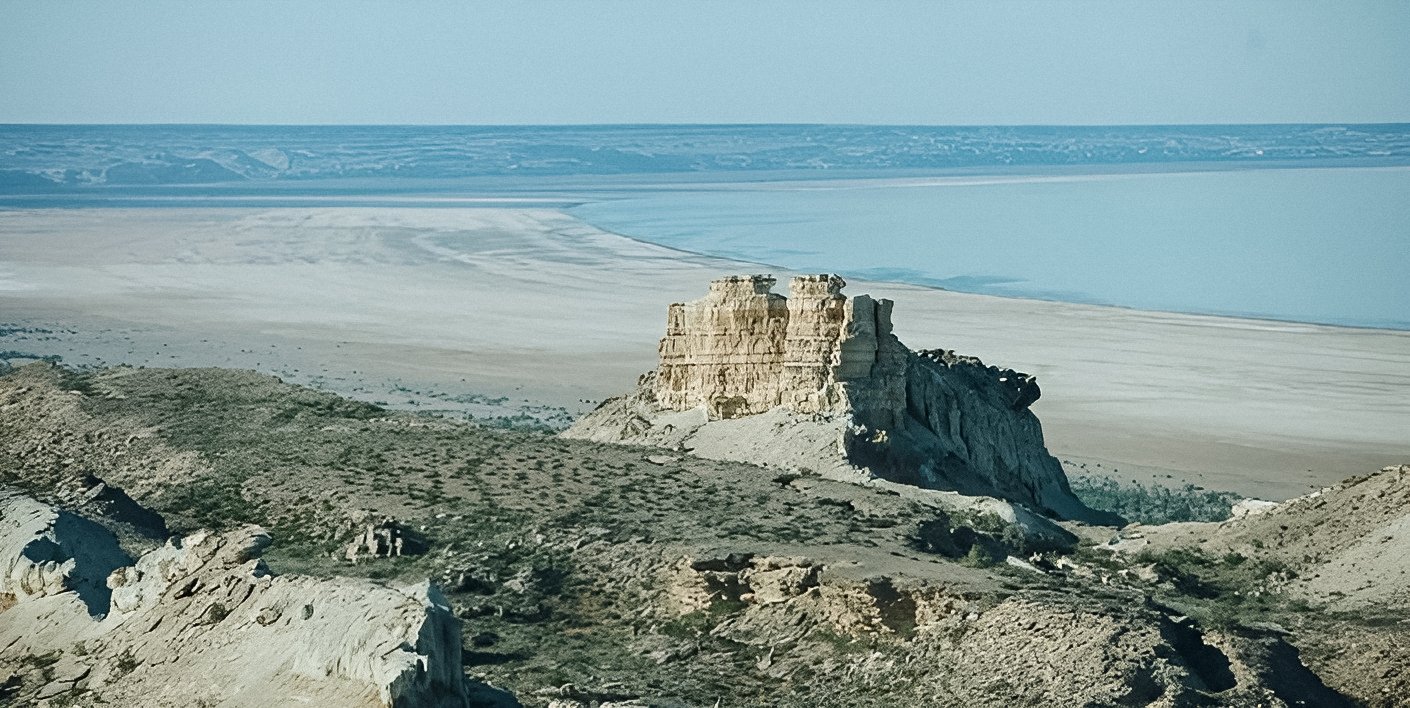Renowned for its mysterious allure and eerie legends, Barsa-Kelmes stands as a testament to the ancient folklore and modern conspiracy theories that surround it. This ‘Island of No Return’, as its Kazakh name translates to, has long captured the imagination of locals, researchers, and adventure seekers alike. So, what mystery lies on the island of Barsa-Kelmes?
Unveiling the mystery: Barsa-Kelmes

Situated in the expansive Aral Sea, Barsa-Kelmes was once the largest island within its boundaries. The island, measuring 23 km long and 7 km wide, was mostly barren with sparse vegetation. Its geographical isolation and harsh conditions made it an inhospitable place for humans, contributing to the mystery and folklore surrounding it.
However, the island’s fate was tied to the Aral Sea, which has significantly receded over the years. As the sea shrank, Barsa-Kelmes expanded, eventually transforming into a peninsula and then integrating into the vast steppes of Kazakhstan. Today, the once-isolated island is a desolate part of the arid Aral Sea region.
Legends and lore: The spooky tales

Barsa-Kelmes has always been steeped in spine-chilling legends and tales. The island’s Kazakh name, translating to ‘Island of No Return’, has its roots in ancient folk tales. Kazakh people native to the area have tales of entire families that vanished on the island tracelessly, and legends (such as ‘Koblandy-Batyr and Seven Brothers’) about people that spent a day on Barsa-Kelmes only to find that decades are passed for those who left on the shores of Aral.
Other tales tell of caravans and groups mysteriously disappearing after reaching the island, adding to its eerie reputation.
Local lore also speaks of bizarre creatures inhabiting the island. From giant sea serpents to monstrous creatures with elongated necks, these tales further cemented Barsa-Kelmes’ status as a place to be avoided. But the most chilling of the stories revolved around a prehistoric lizard, which supposedly feasted on the unfortunate souls who found themselves on Barsa-Kelmes.
Since the late 1950s there were reports of strange events that confirm the reputation of the island. An article published in 1959 tells about an encounter with a living pterosaur. The letter of the ship mechanic Timur Dzholdasbekov, written in the late 1980s, describes how he discovered “a military base of sorts” during his trip on the island; when he returned on the next day, he found no buildings in the same place. In 1991, a major scientific expedition planned to go there, but the USSR crumbled, stopping the plans for it.
The Bermuda Triangle of Central Asia: Modern conspiracy theories
Barsa-Kelmes’ reputation as a hotspot for the strange and unexplainable didn’t end with ancient legends. The island’s eerie history made it a fertile ground for modern conspiracy theories, particularly during the second half of the 20th century. Reports of paranormal activity, including mysterious plane crashes and UFO sightings, turned the island into Central Asia’s very own “Bermuda Triangle”.
Fueling these conspiracy theories were publications such as the Soviet magazine “Tekhnika Molodyozhi”. The magazine featured gripping stories about the island, including tales of time distortions, malfunctioning compasses, and UFO sightings. These accounts were often backed by local fishermen, further stoking the public’s fascination with Barsa-Kelmes.
The Soviet connection: Secret military base?
Adding to the intrigue of Barsa-Kelmes were reports of a hidden Soviet military base on the island. These claims suggested that the Soviet Union was conducting top-secret operations on Barsa-Kelmes. While these reports have never been confirmed, they have added another layer to the island’s mystery.
What is known, however, is that the Soviets had a secret facility for biological warfare experiments in the Aral Sea. Whether this facility was located on Barsa-Kelmes remains a subject of speculation. Regardless, these theories have only served to enhance the island’s reputation as a place of intrigue and secrecy.
Environmental catastrophe: The disappearance of the Aral Sea
Barsa-Kelmes’ transformation from an island to a part of the mainland is a direct result of one of the world’s most disastrous environmental experiments. The Aral Sea, once the fourth-largest lake globally, started to disappear in the 1960s due to the Soviet Union’s massive irrigation program.
The rivers that fed the Aral Sea were diverted to water millions of acres of farmland. As a result, the sea’s area shrunk drastically, leading to an ecological catastrophe. By 2014, the southern part of the Aral Sea had entirely vanished, leaving behind a barren, salt-crusted desert.
The environmental tragedy not only led to a loss of aquatic life but also transformed Barsa-Kelmes from a mysterious island to a desolate part of the Kazakh steppe.
A protected habitat amidst environmental disaster
Despite its eerie reputation and desolate environment, Barsa-Kelmes was declared a protected habitat by the Soviets long before Kazakhstan’s independence in 1991. The island was home to a diverse range of flora and fauna, including the Eurasian wolf. More than 200 species of birds lived or migrated through here annually.
However, the precise reason for the island’s protected status remains a mystery, as does the secrecy surrounding it. Today, the protected zone, which has expanded tenfold since 2006, is the only conservation area within a region of environmental disaster.
Barsa-Kelmes today

Today, Barsa-Kelmes is a shadow of its former self. The island has been replaced with a barren desert, inhabited by scorpions, spiders, and snakes. The highest point in the area, standing at 108 meters above the former sea level, serves as a stark reminder of the island’s past.
Despite the drastic transformation, locals still refer to the place as an ‘island’. Barsa-Kelmes, though it no longer exists in its original form, remains a fixture in local consciousness, perpetuating its enigmatic legacy.
It’s all a lie: A skeptic’s view on Barsa-Kelmes
According to skeptics, the island itself is not very big and mostly devoid of vegetation. Now, thanks to the shallowing of Aral, it is almost turned into a peninsula, but hundreds of years ago almost the only way to reach Barsa-Kelmes (especially for nomadic cattle-breeding Kazakhs) was a bridge of ice over the sea surface.
In some years, due to severe storms that bridge didn’t form, stranding the people on the island and dooming them to death of starvation. That’s how skeptics believe the “vanishing family” legend came into existence.
On the other hand, skeptics have concluded that the anomalous sightings and pterosaur attacks have an even simpler explanation — it is a hoax.
It is said that, in 1988, two science fiction fans, Sergey Lukianenko and Grigory Savich, both of whom then lived in Alma-Ata, received a request from Moscow Science Fiction fans to investigate strange rumors about the Barsa-Kelmes. They didn’t have the means to do so; however, they were quick to cook two stories: ‘an ancient legend of Koblandy-Batyr and Seven Brothers’ and ‘witness account of Timur Dzholdasbekov’. They sent their ‘findings’ back to Moscow.
They didn’t expect the reaction that followed. Their stories were so spectacular that they were widely published in the press (including the very prestigious Tekhnika Molodyozhi magazine), and the expedition indeed was planned, but the plans were dropped when Lukianenko admitted that there wasn’t much to find on the island.
As for the article of 1959, it was also found to be (a rather risky, given the time of publication) prank pulled by journalist G. Novozhilov.
However, these revelations weren’t enough to turn off the conspiracy theorists and UFO enthusiasts alike around the world.
Final words
Barsa-Kelmes, the ‘Island of No Return’, serves as a fascinating study of how geography, folklore, and modern conspiracy theories intertwine to create a place shrouded in mystery. Whether it’s the chilling tales of ancient times or the unexplained phenomena of the 20th century, Barsa-Kelmes continues to captivate the imagination of those who dare to delve into its enigmatic past.
While the island may no longer exist as it once did, its legacy continues to live on, a testament to the enduring power of stories and the human fascination with the unknown.




